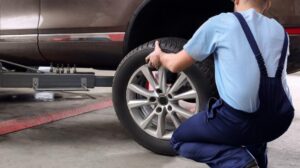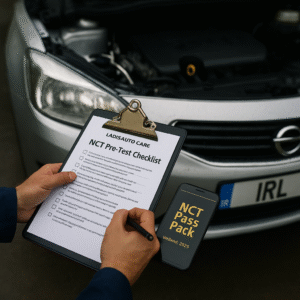Introduction
In this blog post, we will explore the common reasons why a car might stall when coming to a stop. This issue can be frustrating and potentially dangerous, so understanding the root cause is essential. We’ll cover possible culprits such as a dirty throttle body, a faulty idle air control valve, and issues with the fuel delivery system, including a failing fuel pump or clogged fuel injectors. By the end of this post, you’ll have a clearer idea of what might be causing your car to stall and how to address it. Additionally, we will answer some frequently asked questions sourced from Google and provide links to valuable resources like Auto Query and Auto Query Pro.
Understanding the Throttle Body and Its Impact on Stalling
The throttle body is an essential component of your car’s engine system, playing a pivotal role in regulating the amount of air that enters the engine. This regulation is crucial for maintaining the appropriate air-fuel mixture necessary for efficient combustion. When you press the accelerator pedal, the throttle body opens to allow more air into the engine, and when you release the pedal, it closes to reduce the air intake.
Over time, the throttle body can accumulate dirt, carbon deposits, and other impurities. A dirty or clogged throttle body restricts the airflow into the engine, leading to an improper air-fuel mixture. This imbalance can cause the engine to stall, particularly when you come to a stop and the engine is idling. Symptoms of a dirty throttle body include rough idling, poor acceleration, and frequent stalling.
To determine if the throttle body is the culprit, you can visually inspect it for dirt and deposits. If you find that it is indeed dirty, cleaning the throttle body can often resolve the issue. This can be done using a throttle body cleaner and a soft brush to gently remove the buildup. However, if the throttle body is significantly damaged or clogged beyond simple cleaning, it may need to be replaced.
Maintaining a clean throttle body is not only essential for preventing stalling but also for ensuring the overall performance of your engine. A clean throttle body allows for optimal airflow, which contributes to better fuel efficiency, smoother acceleration, and reduced emissions. Regular maintenance and cleaning of the throttle body can help avoid costly repairs and extend the life of your vehicle’s engine.
In conclusion, understanding the role of the throttle body and keeping it clean is vital for preventing stalling issues and maintaining the overall health of your car’s engine. Regular inspections and timely maintenance can ensure that your vehicle runs smoothly and efficiently.
The Role of the Idle Air Control Valve in Preventing Stalls
The idle air control (IAC) valve plays a crucial role in maintaining your vehicle’s engine stability when it is idling. It achieves this by regulating the amount of air that bypasses the throttle plate, thereby controlling the engine’s idle speed. When functioning properly, the IAC valve ensures a smooth and consistent idle, preventing the engine from stalling when the vehicle comes to a stop.
A malfunctioning IAC valve can lead to several issues, primarily an unstable idle that may cause the engine to stall. Common symptoms of a failing IAC valve include rough idling, fluctuating idle speed, and unexpected stalling. Additionally, you may notice the ‘Check Engine’ light illuminating on your dashboard. These symptoms indicate that the IAC valve is not effectively regulating the air flow, leading to an imbalance in the air-fuel mixture required for a stable idle.
Troubleshooting a faulty IAC valve involves a systematic approach. Begin by inspecting the valve for any visible signs of damage or clogging. Accumulated dirt and carbon deposits can obstruct the valve, impairing its operation. Cleaning the IAC valve with a suitable cleaner can often resolve minor issues. However, if the valve is significantly worn out or damaged, replacement might be necessary.
To inspect and replace an IAC valve, follow these steps:
1. Locate the IAC valve, usually positioned on the throttle body of the engine.
2. Disconnect the electrical connector and remove the mounting screws to detach the valve.
3. Clean the valve and the mounting surface thoroughly if you plan to reuse it.
4. Install the new or cleaned IAC valve, secure it with the mounting screws, and reconnect the electrical connector.
5. Start the engine and allow it to idle, observing the performance to ensure the issue is resolved.
Proper maintenance of the IAC valve is essential for preventing stalls and ensuring a stable idle. Regular inspection and cleaning can prolong its lifespan, contributing to the overall reliability of your vehicle.
Fuel Delivery System Issues: Fuel Pump and Injectors
The fuel delivery system plays a crucial role in maintaining optimal engine performance. At its core, this system ensures that the engine receives a precise amount of fuel necessary for combustion. Central to this process are the fuel pump and fuel injectors. When either of these components malfunctions, it can result in insufficient fuel supply, ultimately causing the engine to stall, especially when coming to a stop.
The fuel pump is responsible for transferring fuel from the tank to the engine. A failing fuel pump can manifest through various signs such as difficulty starting the car, sputtering at high speeds, and decreased fuel efficiency. On the other hand, fuel injectors are designed to spray fuel into the engine’s combustion chambers. Over time, these injectors can become clogged with dirt and debris, leading to uneven fuel distribution. Symptoms of clogged injectors include rough idling, misfires, and poor acceleration.
Diagnosing issues with the fuel delivery system involves several steps. For the fuel pump, a pressure test can determine if it is delivering fuel at the correct pressure. This test requires a fuel pressure gauge and should be compared against the manufacturer’s specifications. If the pressure is below the recommended level, the fuel pump may need replacement. For fuel injectors, a diagnostic scan tool can help identify any fault codes related to fuel injection. Additionally, visual inspection and listening for unusual noises can indicate potential blockages.
Addressing fuel pump issues typically involves replacing the failing unit, which can be a complex process requiring specialized tools. For clogged fuel injectors, cleaning them can sometimes restore proper function. This can be done using a fuel injector cleaning kit or, in more severe cases, ultrasonic cleaning performed by a professional. Regular maintenance, such as using high-quality fuel and periodic fuel system cleaners, can help prevent these issues from arising.
Understanding and addressing fuel delivery system issues is essential for ensuring a steady fuel supply and preventing engine stalls. Proper diagnosis and timely maintenance can keep your vehicle running smoothly and efficiently.
Frequently Asked Questions and Additional Resources
Addressing car stalling issues can often be daunting, especially when you are unsure of the underlying cause. To make this process easier, we have compiled a list of frequently asked questions that many car owners have regarding stalling problems. These questions are sourced from Google and aim to clear up common concerns and misconceptions about why your car might stall when you come to a stop.
Why does my car stall when I come to a stop?
Several factors can contribute to your car stalling when you come to a stop. These can include issues with the fuel system, such as a clogged fuel filter, problems with the ignition system, or even a malfunctioning idle air control valve. It is crucial to get a proper diagnosis to pinpoint the exact issue.
Can a bad battery cause my car to stall?
While a bad battery can lead to various electrical issues, it is less likely to be the primary cause of your car stalling when you come to a stop. However, if the battery is unable to provide sufficient power, it could exacerbate other underlying problems that might lead to stalling.
How can I prevent my car from stalling?
Regular maintenance and timely servicing can significantly reduce the chances of your car stalling. Ensure that you keep up with routine checks on your fuel system, ignition components, and sensors. Addressing minor issues promptly can prevent them from escalating into more significant problems.
For more in-depth diagnostics and solutions, we recommend visiting Auto Query and Auto Query Pro. These resources offer comprehensive guides and professional advice to help you resolve stalling issues effectively.
By consulting these additional resources and staying informed about your vehicle’s maintenance needs, you can take proactive steps to ensure your car runs smoothly and efficiently. Understanding the common causes and solutions for car stalling will empower you to address these issues promptly and maintain your vehicle’s performance.





